War Stories III (45 page)
Authors: Oliver L. North

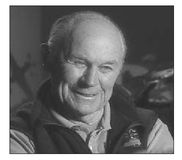
CHARLES “CHUCK” YEAGER
stayed in the USAF after the war and became a test pilot. On 14 October 1947, while flying the X-1, he became the first man to break the sound barrier. He flew his last combat missions in Viet Nam, where he logged 127 missions.
stayed in the USAF after the war and became a test pilot. On 14 October 1947, while flying the X-1, he became the first man to break the sound barrier. He flew his last combat missions in Viet Nam, where he logged 127 missions.
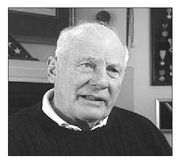
ROBIN OLDS
returned to the U.S. after World War II and continued to fly fighters. During the 1960s, while flying missions over North Vietnam, he shot down four Russian MiGs. He retired from the USAF as a brigadier general and went on to be Director of Aerospace Safety in the Air Force Inspection and Safety Center, a separate operating agency and an organization of the Office of the Inspector General, Headquarters, U.S. Air Force.
returned to the U.S. after World War II and continued to fly fighters. During the 1960s, while flying missions over North Vietnam, he shot down four Russian MiGs. He retired from the USAF as a brigadier general and went on to be Director of Aerospace Safety in the Air Force Inspection and Safety Center, a separate operating agency and an organization of the Office of the Inspector General, Headquarters, U.S. Air Force.
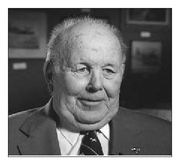
RICHARD BUTLER
and his copilot both returned to the U.S. in March 1944 after sustaining serious injuries when an engine of their B-24 exploded and they crash-landed on Katania, Sicily. Rich remained on active duty after recovering and retired in 1971 as a USAF colonel.
and his copilot both returned to the U.S. in March 1944 after sustaining serious injuries when an engine of their B-24 exploded and they crash-landed on Katania, Sicily. Rich remained on active duty after recovering and retired in 1971 as a USAF colonel.
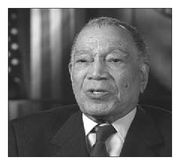
LEE ARCHER
flew more than fifty missions as a “Tuskegee Airman” during World War II and stayed in the service to make the transition from Army Air Corps to the U.S. Air Force. His commitment and courage were rewarded in 1947 when President Harry Truman officially ordered the de-segregation of the U.S. Armed Forces.
flew more than fifty missions as a “Tuskegee Airman” during World War II and stayed in the service to make the transition from Army Air Corps to the U.S. Air Force. His commitment and courage were rewarded in 1947 when President Harry Truman officially ordered the de-segregation of the U.S. Armed Forces.
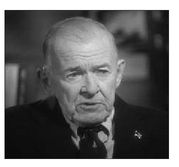
GEORGE DUFFY
, captured by the Germans but turned over to the Japanese, was brutally treated as a slave laborer until liberated in September 1945. Though not eligible for veterans' benefits under the GI Bill, he put himself through college and returned to the sea as a Merchant Mariner.
, captured by the Germans but turned over to the Japanese, was brutally treated as a slave laborer until liberated in September 1945. Though not eligible for veterans' benefits under the GI Bill, he put himself through college and returned to the sea as a Merchant Mariner.
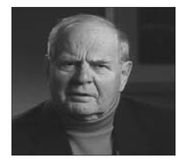
PETER PETERSEN
was released from a British POW camp after Germany surrendered but was placed in an internment facility for several months until he was discharged to work on a farm in his now-divided county. He later immigrated to the U.S. and then became an American citizen.
was released from a British POW camp after Germany surrendered but was placed in an internment facility for several months until he was discharged to work on a farm in his now-divided county. He later immigrated to the U.S. and then became an American citizen.
Â
DAVID BATE
, after serving aboard two destroyers in the Atlantic waters, went to the Pacific theater in April 1944 where he served aboard the USS
Dewey
until the end of the war. After his discharge from the service in October 1945, he went to law school and became an attorney.
, after serving aboard two destroyers in the Atlantic waters, went to the Pacific theater in April 1944 where he served aboard the USS
Dewey
until the end of the war. After his discharge from the service in October 1945, he went to law school and became an attorney.
Â
DOROTHY DEMPSEY
, one of the original U.S. Coast Guard SPARs, was discharged at the end of the war, married, and had two children. The SPARs were disbanded in 1948. During the Korean War she was asked to return to service as a full-fledged member of the U.S. Coast Guard, but as a young mother, she declined the request.
, one of the original U.S. Coast Guard SPARs, was discharged at the end of the war, married, and had two children. The SPARs were disbanded in 1948. During the Korean War she was asked to return to service as a full-fledged member of the U.S. Coast Guard, but as a young mother, she declined the request.
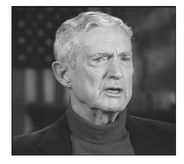
EDGAR “ED” NASH
made it back from the war in time to enroll at Yale for the spring term of '46 and graduated with a degree in industrial administration. A successful heavy equipment salesman in Pittsburgh, he designed heavy hydraulic machinery and eventually moved to Visalia, California, where he made a career in real estate.
made it back from the war in time to enroll at Yale for the spring term of '46 and graduated with a degree in industrial administration. A successful heavy equipment salesman in Pittsburgh, he designed heavy hydraulic machinery and eventually moved to Visalia, California, where he made a career in real estate.
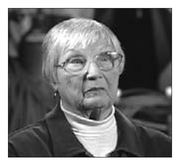
PHYLLIS MCKEY
left her job as a welder at the end of the war so that she and her husband could raise five children. She subsequently became a bookkeeper, then an interior decorator, and has since traveled by RV throughout North America.
left her job as a welder at the end of the war so that she and her husband could raise five children. She subsequently became a bookkeeper, then an interior decorator, and has since traveled by RV throughout North America.
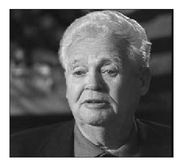
JOHN CULLEN
received the Legion of Merit for discovering and reporting the first landing of German saboteurs on the U.S. coast on 13 June 1942. After the war he worked for Macy's and United Parcel Service and later for National Dairy, on Long Island.
received the Legion of Merit for discovering and reporting the first landing of German saboteurs on the U.S. coast on 13 June 1942. After the war he worked for Macy's and United Parcel Service and later for National Dairy, on Long Island.
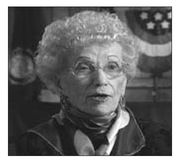
LOURELEI PRIOR
and her husband, Herb, started a small business and raised two daughters. She has four grandchildren, five great-grandchildren, and has served as a Disabled American Veterans volunteer at an Indiana VA hospital, and was auxiliary chaplain at American Legion Post 296 for more than twenty years.
and her husband, Herb, started a small business and raised two daughters. She has four grandchildren, five great-grandchildren, and has served as a Disabled American Veterans volunteer at an Indiana VA hospital, and was auxiliary chaplain at American Legion Post 296 for more than twenty years.
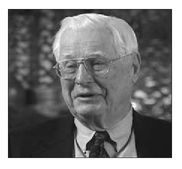
Other books
The Crossroads by Chris Grabenstein
Devour by Andrea Heltsley
Apex Predator by Glyn Gardner
Ramsey Campbell - 1976 - The Doll Who Ate His Mother by Ramsey Campbell
Highland Storm by Ranae Rose
El Libro Grande by Alcohólicos Anónimos
Reading His Mind by Melissa Shirley
Neuromancer by William Gibson
Calling His Bluff by Amy Jo Cousins
Baseball by George Vecsey
